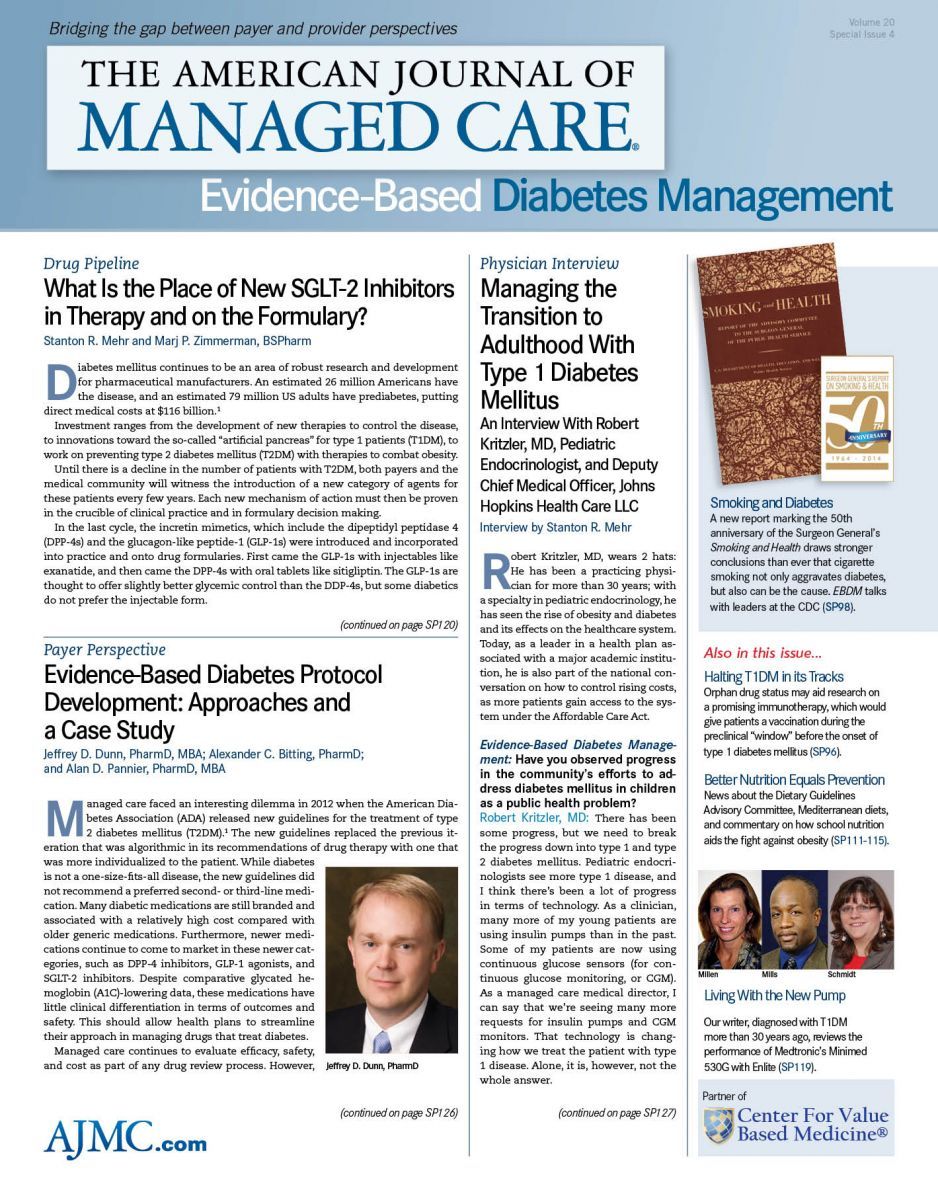- Center on Health Equity & Access
- Clinical
- Health Care Cost
- Health Care Delivery
- Insurance
- Policy
- Technology
- Value-Based Care
Study on Protective Gene Mutations for T2DM Appears to Have Strong Implications for Drug Development
It may be 10 years before the discovery of gene mutations that block type 2 diabetes mellitus (T2DM) leads to a therapy, but that did not diminish the enthusiasm of scientists who heralded the March 2, 2014, announcement as a “tour de force,”1 and a potential game-changer in treatment of this worldwide epidemic.
An international group of scientists, led by the Broad Institute and Massachusetts General Hospital (MGH) and publishing in Nature Genetics,2 announced that genetic tests on more than 150,000 people had uncovered the existence of mutations in a gene that can reduce the risk of developing T2DM, even among those who have risk factors like obesity or old age.3 The results have huge therapeutic implications; if harnessed, they could shift the approach from treating symptoms and complications to prevention of the disease itself.
In the study, researchers sorted through the genetic analysis of a large group of patients who displayed rare mutations in a gene called SL30A8, whose protein had previously been shown to have a role in the insulin-secreting beta cells of the pancreas. Unlike an earlier variant of the gene that had increased risk of T2DM, the mutations identified by the team from Broad and MGH reduced the risk of the disease by 65%.3
If a therapy could be developed to mimic the behavior of the mutations, it could potentially allow physicians to prevent those at risk of diabetes from developing the disease. But much work remains, for scientists must now learn whether the presence of the mutation carries with it any harmful health effects.1
The discovery represents a triumph not only in studying human genetics but also for an international approach to studying diabetes. T2DM affects 300 million people of all ethnic groups across the globe, and one of the fruits of the study are findings that seem to hold up across ethnicities, which would bolster the aims of those seeking to translate the results into a therapy.
“This work underscores that human genetics is not just a tool for understanding biology; it can also powerfully inform drug discovery by addressing one of the most challenging and important questions—knowing which target to go after,” said David Altshuler, MD, PhD, deputy director and chief academic officer at Broad, as well as professor at Harvard Medical School at MGH.3
According to a press release from the Broad Institute, work on the study stems from a 2009 research partnership among the Broad Institute, MGH, the Lund University Diabetes Centre in Sweden,
and Pfizer Inc., which helped fund the study. Researchers took a different approach than what is normally done when using genetics to fight disease: instead of seeking out genetic mutations that revealed who was a greatest risk, the team sought out persons who had all the usual risk factors for T2DM but nonetheless did not have the disease and had normal blood sugar levels.
The team found a genetic mutation that appeared to block SLC30A8 function and was present in persons without diabetes in Sweden and Finland. Scientists were surprised by their findings because a similar mutation was known to cause diabetes in laboratory mice; for this reason, The New York Times reported, an early paper on the results was rejected.1 But additional data became available when Amgen purchased a database from deCODE genetics, which revealed a second mutation of SLC30A8 that also blocked diabetes in a group of patients from Iceland. The team finally compared these findings to a database of multiple ethnicities created for the T2D-GENES Project, which is funded by the National Institutes of Health (NIH).
EBDM
Pfizer’s Tim Rolph, PhD, vice president and chief scientific officer of Cardiovascular, Metabolic & Endocrine Disease, praised the work of the partnership in identifying the mutations. “Such genetic associations provide important new insights into the pathogenesis of diabetes potentially leading to the discovery of drug targets, which may result in a novel medicine.” Besides Pfizer and NIH, major funding for the study also came from the Doris Duke Charitable Foundation.3
References
1. Kolata G. Rare mutation kills off gene responsible for diabetes. The New York Times March 2, 2014:A12. http://www.nytimes.com/2014/03/03/health/rare-gene-protectsagainst-type-2-diabetes-even-in-obese-people.html?_r=0. Accessed March 10, 2014.
2. Flannick J, Thorleifsson G, Beer NL, et al. Loss-of-function mutations in SLC30A8 protect against type 2 diabetes. [Published online March 2, 2014]. Nature Genetics.
3. Bridger H. Study pinpoints protective mutations for type 2 diabetes [news release]. Cambridge, MA: Broad Communications; March 2, 2014. http://www.broadinstitute.org/news/5570. Accessed March 10, 2014.

HEDIS Glycemic Goal Achieved Using Control-IQ Technology
December 22nd 2025A greater proportion of patients with type 1 diabetes who used automated insulin delivery systems vs multiple daily injections achieved the Healthcare Effectiveness Data and Information Set (HEDIS) glycemic measure.
Read More
Performance of 2-Stage Health-Related Social Needs Screening Using Area-Level Measures
December 19th 2025Limiting health-related social needs screening to lower-income areas would reduce screening burdens; however, this study found a 2-stage screening approach based on geography to be suboptimal.
Read More
Exploring Pharmaceutical Innovations, Trust, and Access With CVS Health's CMO
July 11th 2024On this episode of Managed Care Cast, we're talking with the chief medical officer of CVS Health about recent pharmaceutical innovations, patient-provider relationships, and strategies to reduce drug costs.
Listen
Physician-Pharmacy Integration in Cancer Care: Pillars of Medically Integrated Pharmacy
December 16th 2025The foundation of medically integrated pharmacy includes 7 critical pillars. This commentary focuses on the benefits of 3 of those pillars: abandonment, adherence, and access/affordability.
Read More

